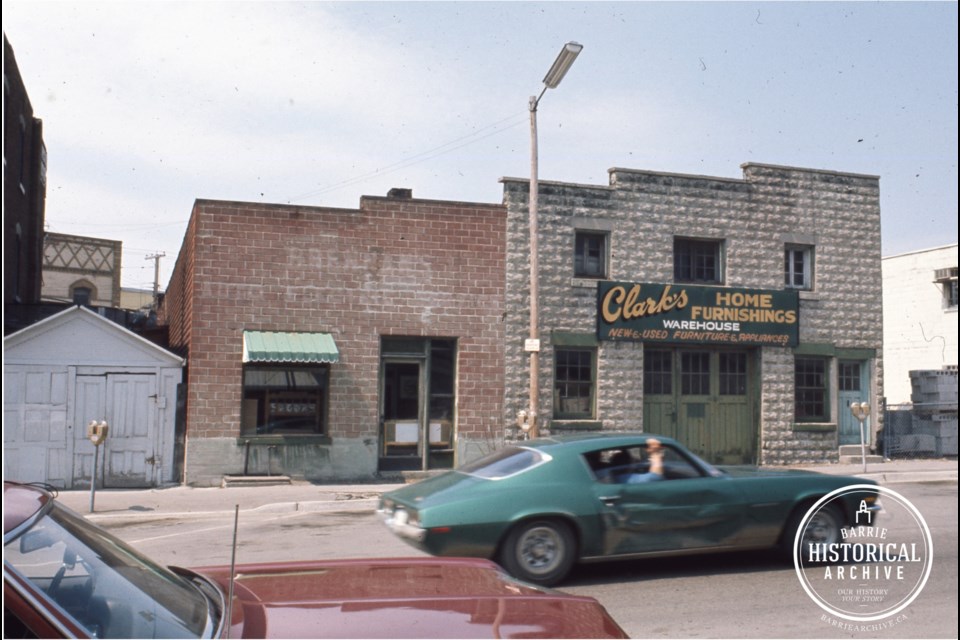The recent rise in popularity of tattoos has been so rapid that most people easily remember when expressing yourself with this permanent form of body art was mostly looked down upon.
Currently, on average, a quarter of adult Canadians now have a tattoo of some sort.
Up until the 1960s, though, most talk of tattooing in Barrie either referred to a much-anticipated military display of music and marching, or to the inking of pets or livestock as a means of identification.
References to body tattoos were usually of the negative variety. Mentions of tattoos in the Barrie newspapers of the 20th century were mainly attached to descriptions of wanted criminals or of the unidentified victims of violent crime. This added to the belief that anyone with ink must be from an unsavoury crowd.
It was against this backdrop that Robert Venet Hughson sought a business licence from the Town of Barrie in September 1948. He wanted to open a tattoo parlour on Elizabeth Street, but, as the Barrie Examiner reported, the initial response from the local powers that be was less than favourable.
“Several members of council indicated that they were not anxious to have any person tattooing in Barrie. The clerk was instructed to prepare a bylaw to license tattooing establishments and there was an indication that a high fee would be stipulated.”
Robert Hughson had one thing going for him and that was timing. This was the era just after the Second World War and there was a feeling that everything should be done to help military veterans get back on their feet and to patronize any businesses they might start. Robert Hughson was a returned soldier.
Not only was he an ex-serviceman but he was trained in tattooing by another serviceman, a professional nicknamed Sharp. Afterwards, Hughson rode a bicycle from one military camp to another across England and tattooed some 1,000 overseas soldiers.
He began his craft as an amateur in Toronto and then took his trade on the road to the Calgary Stampede and to the summer crowds at Wasaga Beach. When he turned professional, he was only the seventh tattoo artist in Canada to do so.
It would have been very difficult for Barrie town council to turn down this former soldier, a married man with a nine-year-old daughter.
They didn’t.
Robert Hughson got his wish and started what was likely the first professional tattoo parlour in Barrie.
He lived and worked from 82 Elizabeth St., a place that he assured would be the site of a respectably run business. He invited anyone to come and watch him at work if they liked.
One year later, the Hughson parlour was featured in a front-page article in the Barrie Examiner. Perhaps, his unique art form was still a bit of a mysterious thing to the people of Barrie.
Hughson told the reporter that his tattoos were all of his own creation. He had some 200 designs ready to go: birds, snakes, daggers, lighthouses, crests, religious motifs, you name it. He could handle anything from “a neat little anchor” to “a full-grown tiger complete with stripes.”
Tattoos of “Mother,” “Death Before Dishonor” or tropical scenes were the favourites. His customers were almost entirely male but not all. They also included some well-to-do clients and at least one military chaplain.
The reporter was curious. Doesn’t it hurt? No, said Hughson, but it might burn just a little. He kept some smelling salts on hand just in case, though.
The fee at the time was $10 an hour and it generally took Robert Hughson 20 minutes to produce a tattoo. His largest project had been an elaborate crucifix that was completed over four sessions of 90 minute each.
Hughson still had the original electric tattoo needle given to him by his mentor, Sharp, but it sat on a shelf as Hughson had designed his own custom set up. His inks were imported in powder form and mixed in the shop.
When asked what was to come next, Robert Hughson shared that he was making plans with a client to tattoo a large Lord’s Supper image on a man’s chest.
He added that he had a hero. Albert ‘Speed’ Robinson of Vancouver was a legendary figure in the world of tattoo arts at the time and Robert Hughson aspired to be just as good as him some day.
Each week, the Barrie Historical Archive provides BarrieToday readers with a glimpse of the city’s past. This unique column features photos and stories from years gone by and is sure to appeal to the historian in each of us.



